The earliest Ashanti artifact donated to the American Museum of Natural History was acquired through gift. William Demuth was a German immigrant who worked in the tobacco importation business (Rapaport, 1999). Demuth collected smoking pipes worldwide, including the Asante pipes gifted to the American Museum of Natural History. Today in museums such as the British Museum and Pitt River Museum, Ashanti smoking pipes can be seen.
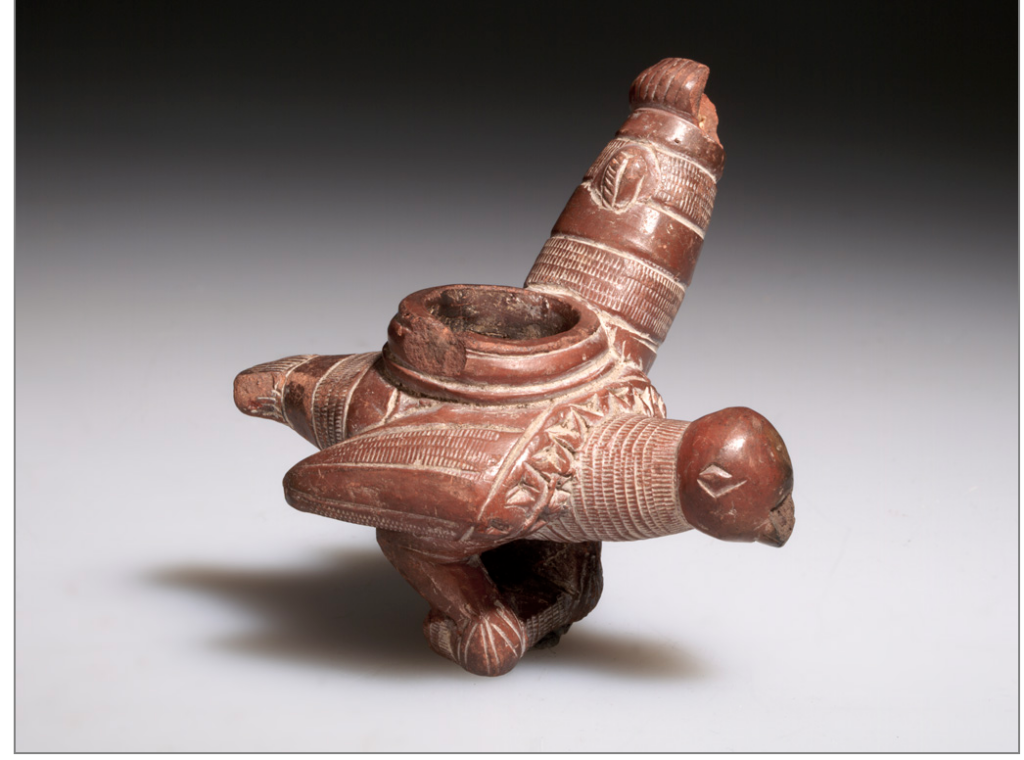
Fig. 43 
Fig. 44. Exhibited at CINCINNATI MUSEUM OF NATURAL HISTORY, CINCINNATI, OH. March 1984 – October 1985 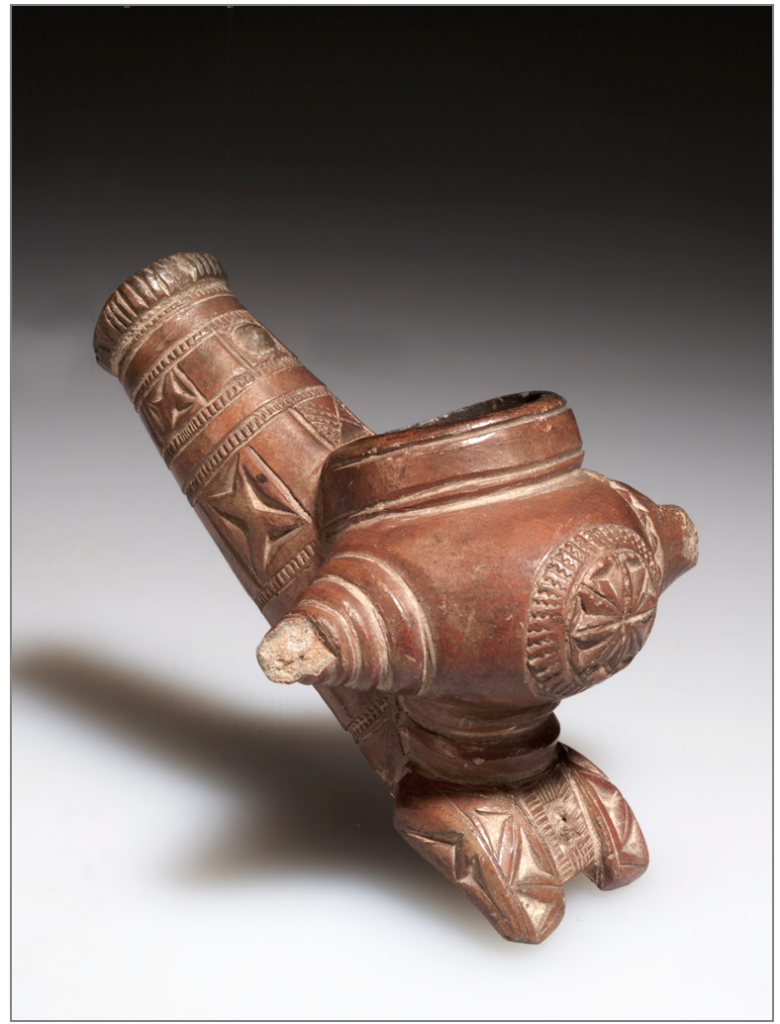
Fig. 45 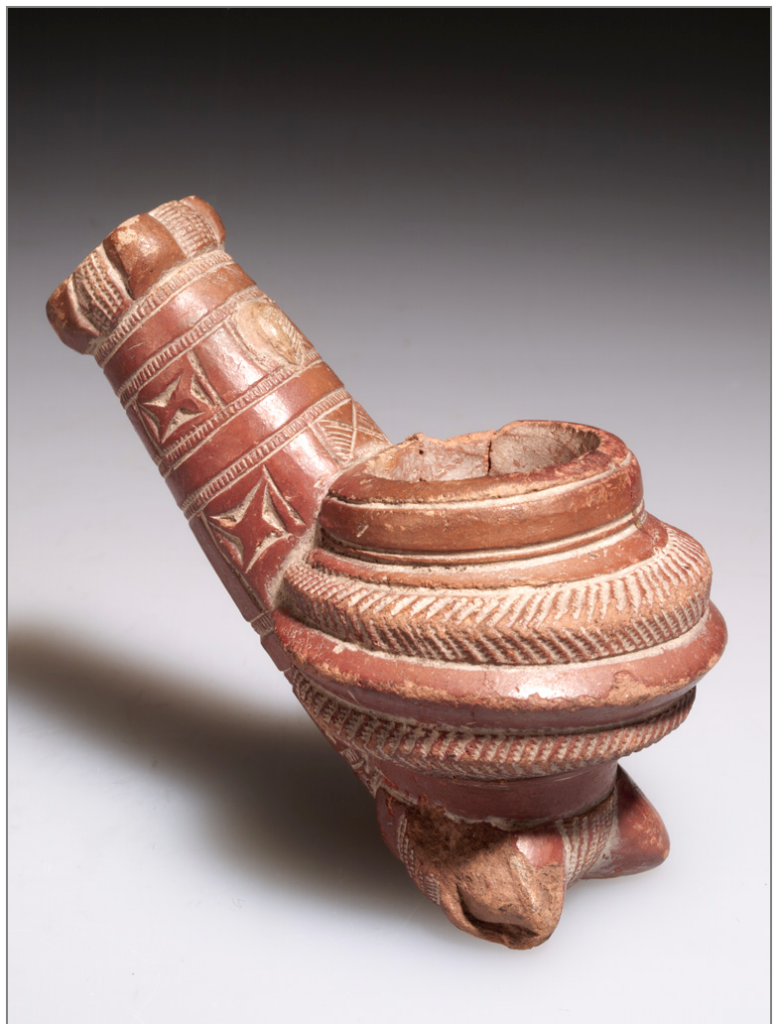
Fig. 46

Fig. 47 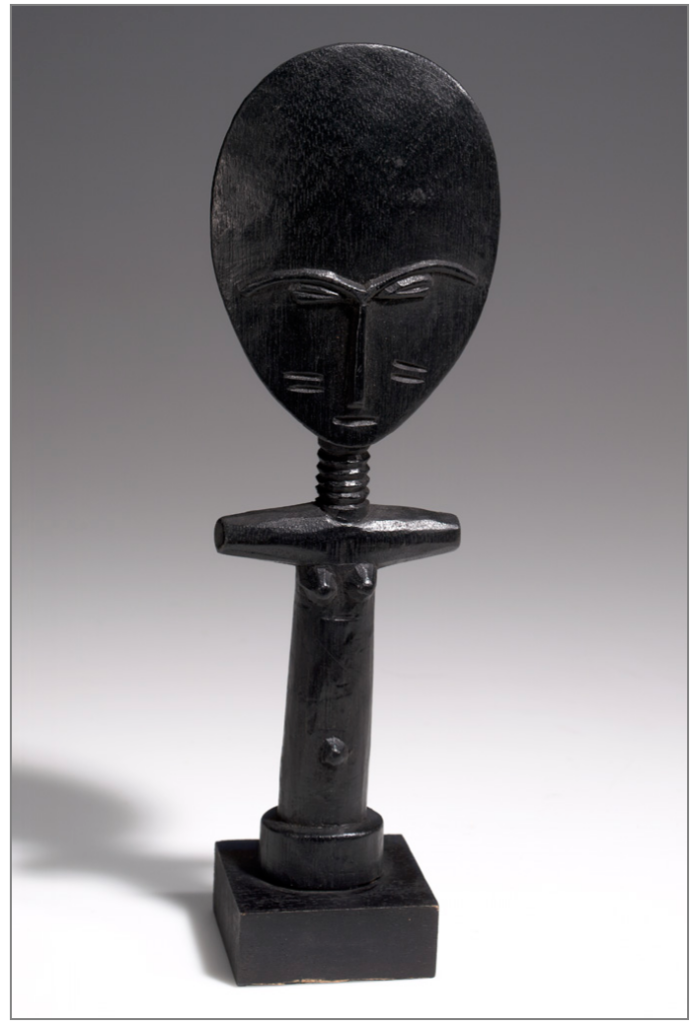
Fig. 48 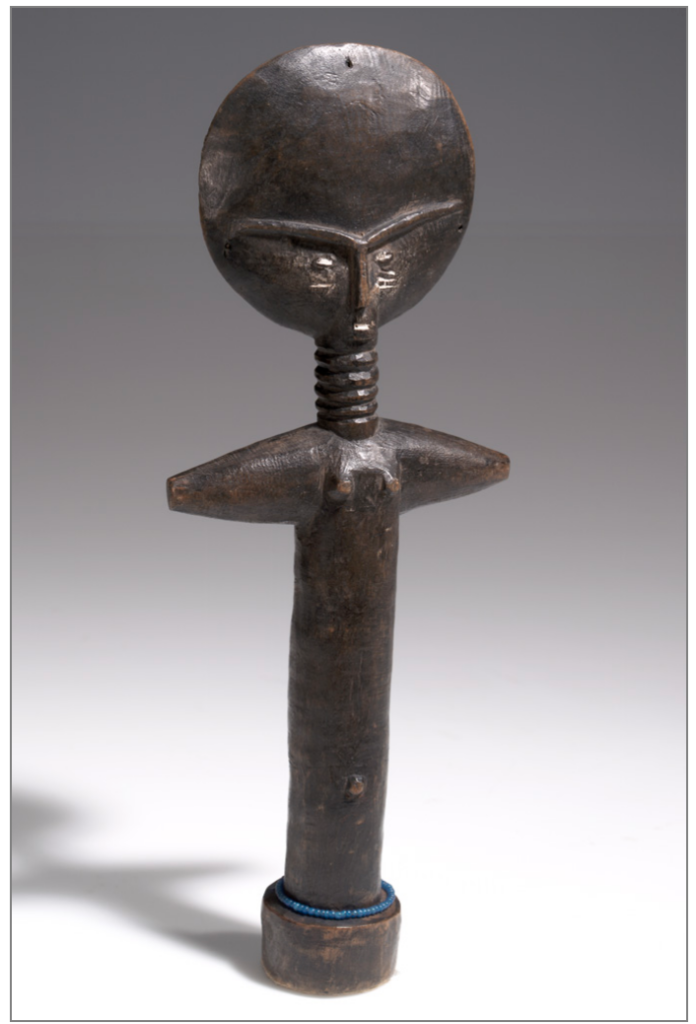
Fig. 49 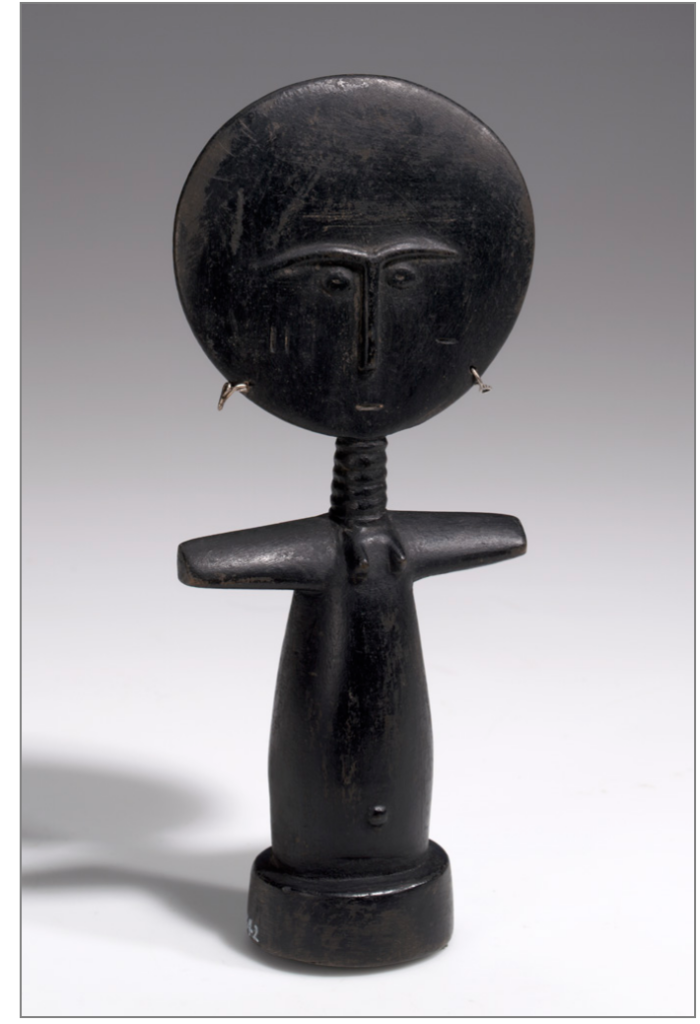
Fig. 50 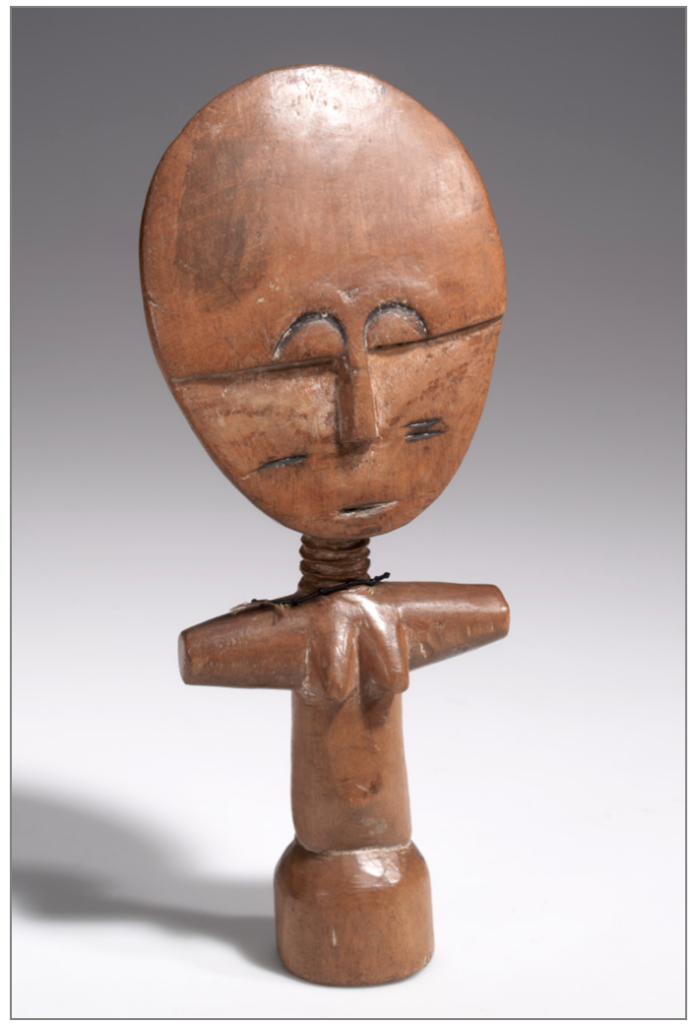
Fig. 51 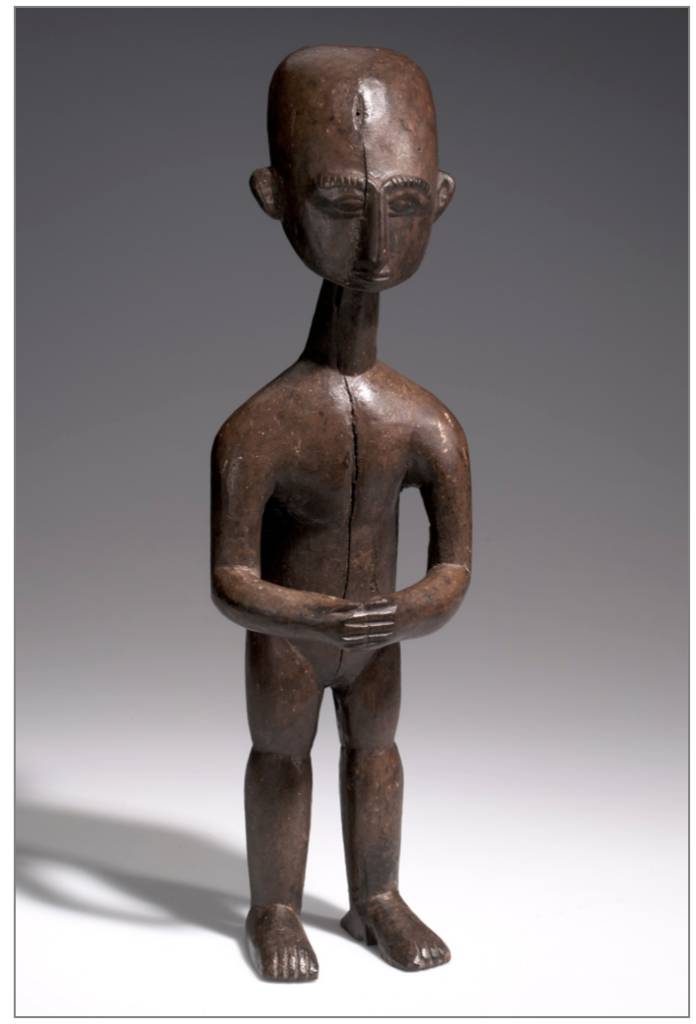
Fig. 52 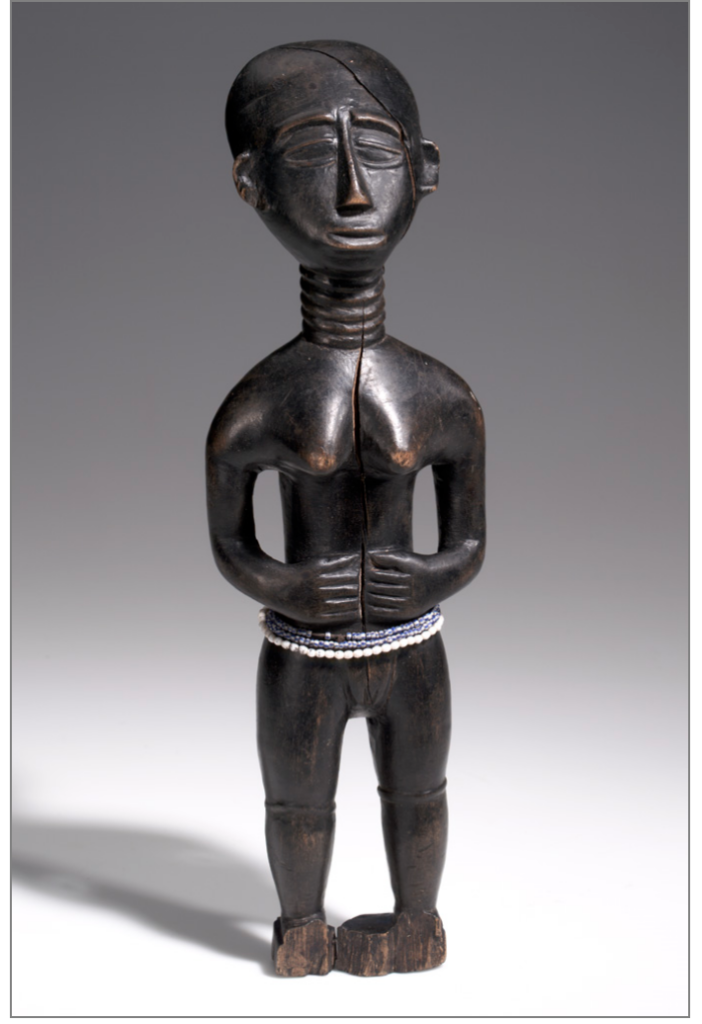
Fig. 53 
Fig. 54 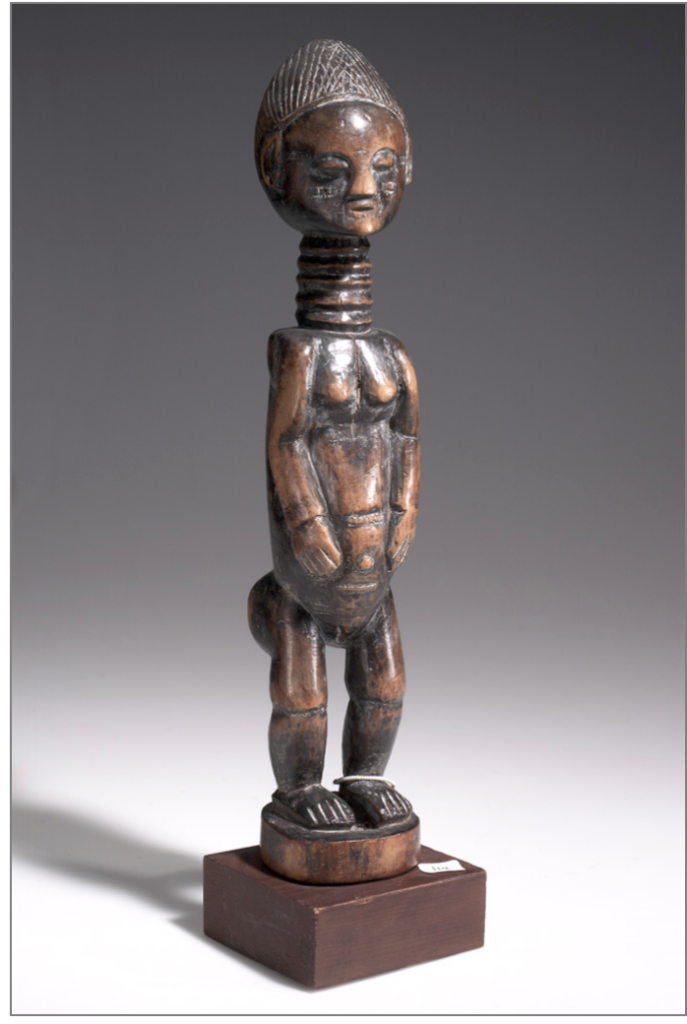
Fig. 55 
Fig. 56 
Fig. 57
Akuaba / Fertility doll
Akuaba (Akua’ child) is an Akan fertility figure carved for women seeking to conceive children. According to oral history, a woman, Akua (a name given to a female born on Wednesday), could not get pregnant, and so she seeks help from a priest. The priest instructed Akua to get a carved wooden doll and care for it as it was her child. Following the instruction of the priest, Akua conceived. Akuaba doll is an integral part of the Asante culture. It is given as a gift to women who have trouble conceiving and are sometimes passed down from families for generations. While the doll’s story suggests usage by women seeking to conceive a child, the Akuaba figure is also given to young girls to prepare them for motherhood. Today Akuaba figures can be seen in most of the biggest European and North American and museums such as the Metropolitan Museum of Art, British Museum, and the Smithsonian National Museum of African Art.
In the year 1996, the American Museum of Natural history received 18 Akuaba Figure from psychologist Anne Anastasi Foley as a gift. According the museum catalog document, Anne Anastasi Foley acquired these figures as a gift and subsequently gifted the dolls to the museum in memory of her husband, John Porter Foley.

